*FYI - this post may contain affiliate links, which means we earn a commission at no extra cost to you if you purchase from them. Also, as an Amazon Associate I earn from qualifying purchases. Check out our Privacy Policy and Disclosure. for more info.
If you’re like me and come from a place where passenger rail isn’t common, then attempting to travel Europe by train on your own can feel as daunting as it does whimsical.
How do I buy the right ticket? What routes can I take? How do I access Platform 9 3/4?
Well, allow me to step into the very made up role of fairy trainmother. I’ve been travelling around Europe by train for almost a decade, so I’ve done most of my learning the hard way…. Learnings which I will now share with you in this compact step by step guide.
Whether you’re anxious before your trip, or just curious to see what it’s like, this post will walk you through step by step how to take trains in Europe, from start to finish.
NOTE: Train travel of course differs from country to country, so this post will speak in very general terms, but let me know in the comments if you’d like any country-specific ones!
Step One: Decide if Train Travel in Europe is Right for You
First off – while I’m as ardent a train nerd as they come, I have to admit that trains aren’t always the best option in every country or circumstance.
Depending on the length of your trip, your destination, and your priorities (whether they’re budget, comfort, or experience), it may be worth looking into other options. One app I love for this is Omio, which shows you planes, trains, and buses from Point A to Point B.
Generally speaking, I think train travel is great if you’re looking for convenience, comfort and scenery.
Budget-wise, buses and budget airlines like Ryanair, easyJet and Wizz Air are usually cheaper, but honestly, for me, nothing beats arriving into the city centre directly after a long scenic ride of wistfully watching the world go by.
In some cases, like with some of the more scenic train journeys in Europe, the journey itself is the experience.

So, consider the pros/cons of train travel before moving on.
If/when you’ve decided you do indeed want to take the train, then we move onto…
Step Two: Buy Your Europe Train Tickets
Depending on the country, the pricing of trains in Europe is either…
- Fixed based on distance, like in the Netherlands and Belgium, which means the price will be the same whether you buy in advance or on the day of
- (Or, more commonly) dynamic based on the timing of your purchase and general demand like in Germany, Italy, and many other countries
Generally speaking, if budget is your #1 priority, the cheapest way to travel Europe by train is to pre-book your tickets in advance.
For those who want flexibility and ease however, a rail pass may be a better option, but whether or not that’s worth it depends on many factors which I cover in my full Eurail pass review so be sure to give that a read if you’re considering it.

Now, when you go to buy tickets, you can either do so in person or online. I would highly advise booking online beforehand to minimize stress, and save money.
In person, you would typically buy your tickets from a digital kiosk, like one of these:
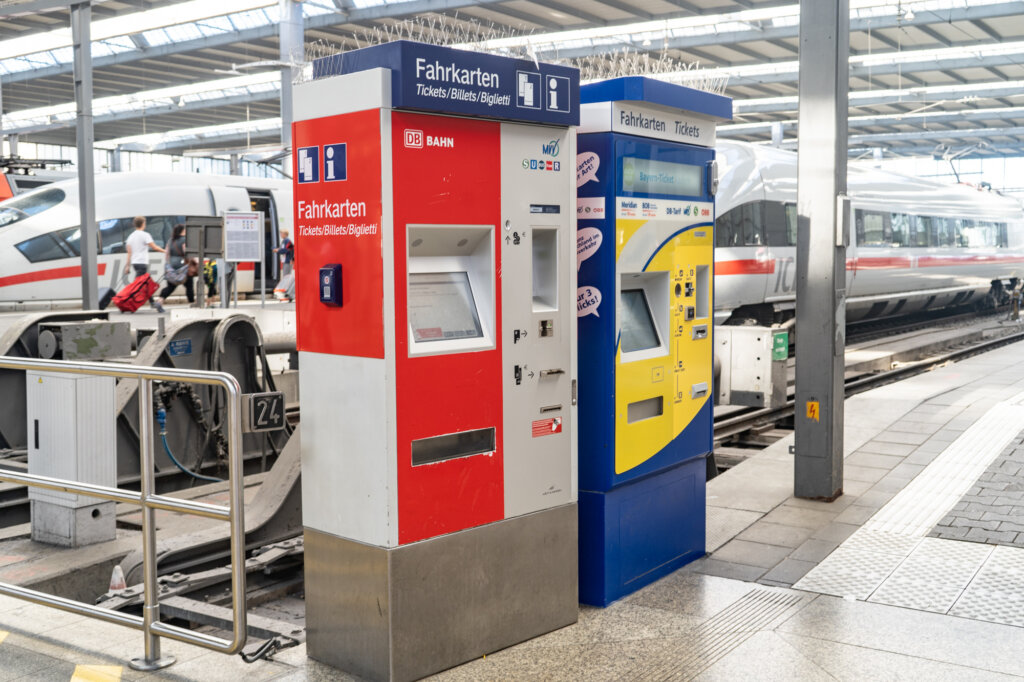
There is also sometimes the option to visit a customer service desk and purchase from there, although beware that certain countries may charge an additional charge when you buy via a customer service agent, compared to doing it yourself.
Online, you can either buy tickets directly through the train company or through a third party website.
The benefit of booking directly is usually it will be the cheapest, but I’ve found some rail company sites aren’t the easiest to use or most intuitive.
For me personally, more often than not, I actually book through third party sites like Omio or Trainline (mostly for the UK).
Yes you do pay a bit extra in service fees, but with third party sites, you get the benefit of simple user experience, a familiar interface across countries and often you can save your payment information as well which is handy if you plan to buy multiple tickets from multiple companies.
Third party sites/apps are also great for keeping all your tickets organized in one place.
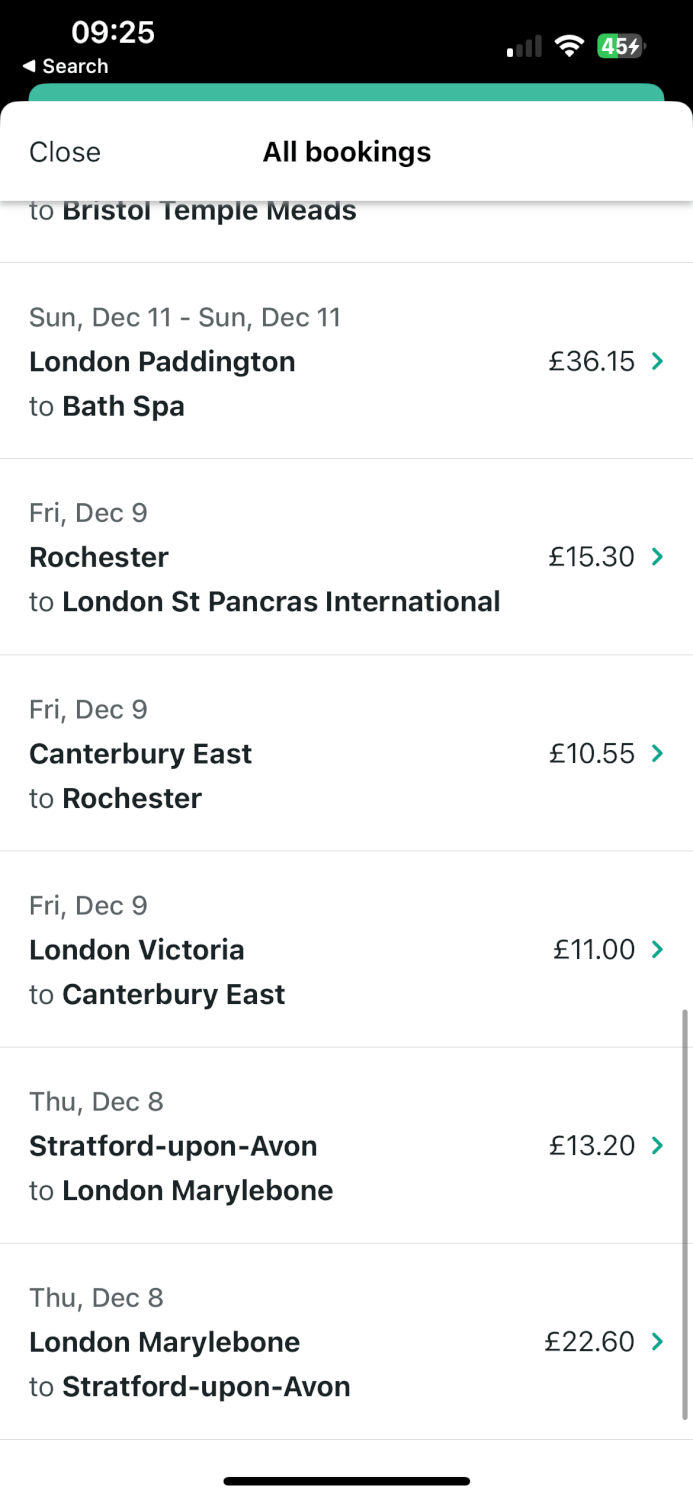

Whether you buy from the official website or from a third party though, there are several considerations to keep in mind when buying tickets.
Type of train: Most rail systems in Europe have a mix of high speed trains intended for Intercity use/longer journeys, as well as slower regional or suburban trains meant for shorter journeys.
Generally, the higher the speed, the higher the price, but do pay attention to the type of the train when booking so you can make an informed decision.
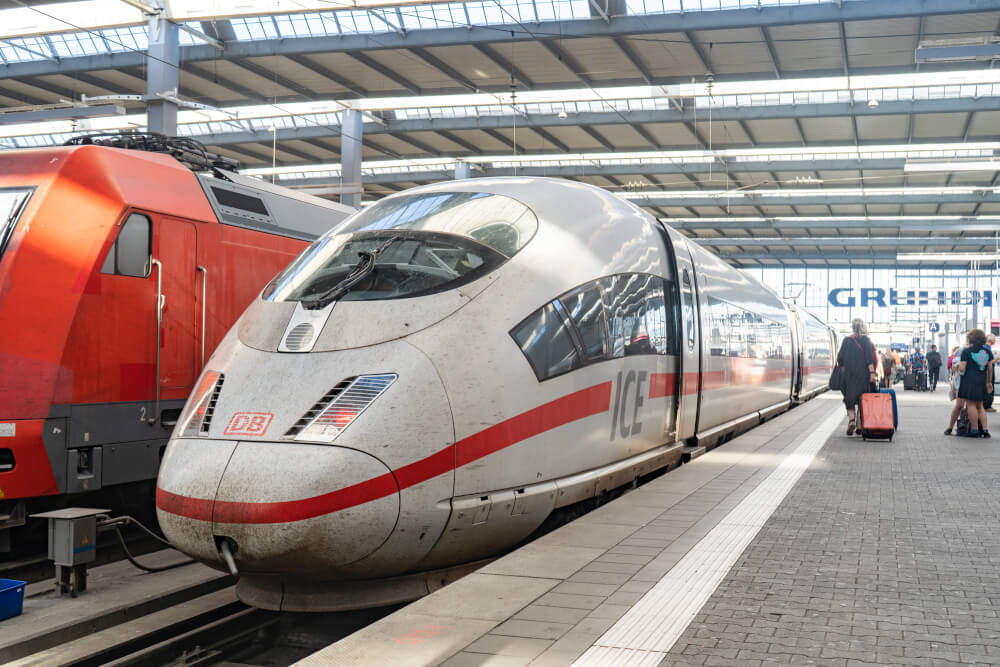
Peak or off-peak: In some countries like the UK and the Netherlands, pricing can also depend on the departure time of your train, with peak periods like before and after work costing more than off peak periods. I would recommend booking your journeys for off peak periods even if there’s no discount because it still has the benefit of being much quieter and less chaotic. The discount when there is one of course also helps.

1st vs 2nd class: In most cases, there isn’t a dramatic difference between first and second class seats on European trains. The main perk of first class is it’s generally quieter and sometimes the seats are slightly comfier or more spacious. On longer journeys there may also be additional amenities like food service to your seat, but the difference isn’t as stark as say 1st class vs economy when flying.

Reserved seats or not: depending on the country and train type, seat reservations may be…
- Mandatory
- Optional
- or not available at all, as is the case with many regional trains
If you are anxious about your trip, and especially if you are travelling during a peak season or time, then I’d highly advise booking a reserved seat.
Often this doesn’t cost more than 10 euros extra and the ease of mind it can bring is priceless. If you are travelling in a very off peak time though, you can usually get away with not pre booking a seat.

If reservations are available, then a further consideration are the different cabin types. Depending on the country, there may be different carriages with different formations (e.g. closed compartments vs. open plan seats).
In some countries, there may even be special carriages fit for different purposes, like…
- Silent/quiet carriages
- Cellphone carriages (where you can freely make calls)
- Bike zones (with additional space)
- Accessible zones
So be sure to keep those in mind when reserving your seat.

Lastly, if you are travelling with a bike or with a pet, know that often there are add-on tickets you must buy to bring bikes or pets on board.

And if you’re looking to save some money, here are a few discounts to look out for…
- Age: Many companies will offer discounted tickets for children, youths up to around age 26 and also seniors
- Groups: In countries like Germany and the Netherlands, there are often tickets you can buy for a group which work out to be cheaper than buying tickets on your own
- Weekend/Holiday: Many countries will offer special deals for travel on weekends, like in Belgium
- Day tickets: Most rail systems have day tickets where you pay a set price for unlimited travel in a day, which can be very good value for day trips
- Attraction tickets: Some companies offer discounted prices for train travel when combined with an attraction ticket
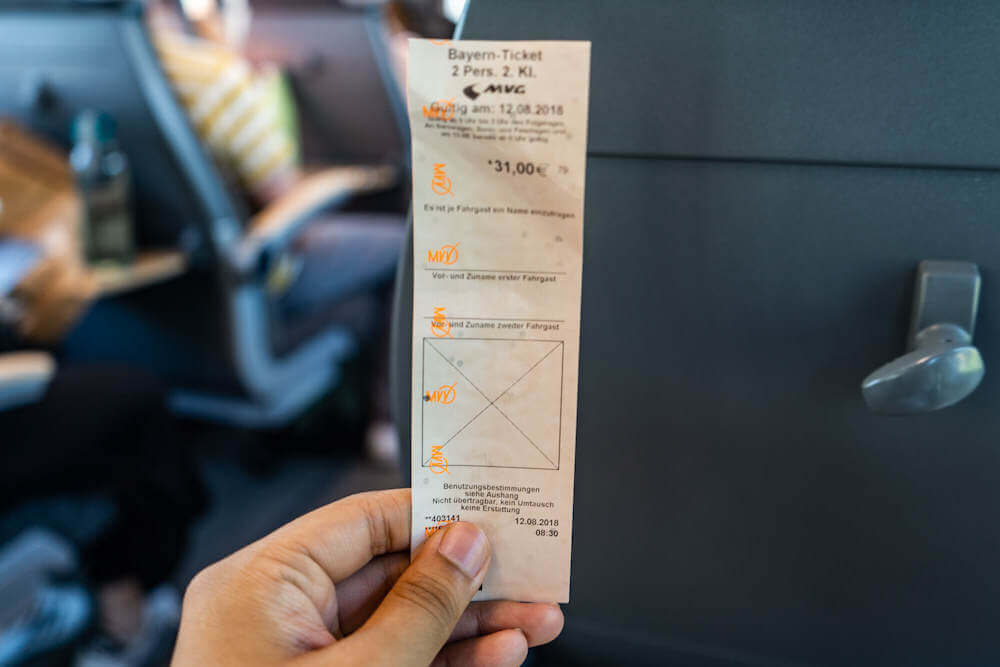
If you’re planning a longer term trip or perhaps are staying somewhere for a longer period, then another thing to look into would be a rail card or discount pass that costs a set fee but then gives you discounts for a year.
Many countries have these and they can save you quite a bit if you’re booking a lot of journeys.

Alright with your tickets booked it’s time to move onto the day of your journey, with…
Step Three: Get Snacks
Before heading to the station I highly recommend making sure you have some snacks or drinks to bring with you on the train.
Eating and drinking is allowed in most trains, and while some longer intercity ones will have meal options on board, they’re often quite expensive and mediocre.
At the very least, make sure you have water or something to drink, in case you’re hit with a delay.
There are usually also options at the train station too but I find it less stressful to just have something in advance.

Now let’s move onto…
Step Four: Arrive at the Station
First off, before leaving, do double check that you are headed to the right station. Many major cities will have multiple stations, which can cause confusion and (if you’re not careful) result in you missing your train…. not that I know that from personal experience or anything.
Now, if it’s your first time at this station, I recommend you arrive thirty minutes or more in advance of your departure time.
Train stations in Europe can be overwhelming for first timers, especially if you end up at one of the mega-monster stations in large cities which have multiple levels, shops and upwards of 20 platforms.
Now, if you are taking public transport and arriving at the train station in a big city, you might find it tough to find where the trains actually are, because often these stations are multi level transport hubs servicing Metros, Trams and buses as well.
In any case, all you need to do is look for train symbols on signs like this which will point you in the direction of the platforms:

Now when you get to the main concourse of the train station, your priority is finding out which platform your train is on.
Often apps will tell you in advance but in big stations sometimes trains won’t even know which platform they’ll be on until they arrive.
In those cases, you may have to wait until the platform is announced. Simply stand at the big board (usually where the crowds are) and find your train then wait for the platform to show.

When looking at this remember that trains will not necessarily say your destination, but rather usually the final destination of the train, so if you don’t see the name of where YOU’RE travelling to, don’t panic.
Look for the time and train number, and underneath for the list of stops to see if your destination is listed, then figure it out from there.
NOTE: In addition to knowing the name of your destination in English, be sure to know its name in any local language(s) as well, because this is typically the name that will be shown on the boards/sides of the train.
In multilingual countries like Belgium, be sure to learn the name of your destination in all official languages, because sometimes they will only show one or the other.


When the platform number is announced then it’s onto your next mission which is…
Step Five: Get to the Platform
Platform numbers will generally be very well marked so just look up for signs before making your way.
When you are making your way to the platform, be sure to have your ticket ready.
Some countries like the UK and Netherlands have electronic gates that require tickets to be scanned.
Others like Italy may require you to physically validate your ticket before stepping on board so double check if the ticket needs to be validated at a machine.

When you get onto your platform, double check it’s correct by confirming either on a screen or on the side of the train that you’re in the right place before proceeding to find your carriage.

Step Six: Find Your Carriage
When walking to the train, if you have an assigned seat, take note of whether there’s a map or any kind of legend that shows you where your seat will be.
This can be helpful because some European trains are outrageously lengthy, so if you stand in the right section, your life will be much easier.

If you do not have an assigned seat, then you simply need to board a carriage in the right class, then pick a free seat at your own leisure.
When picking a carriage to board, pay special attention to…
- The class number of the carriage (you may only board the class you’ve booked for)
- Whether they are special carriages meant for a certain purpose e.g quiet zone, bicycle zone
- Whether the carriage number IS going to your intended location because some trains will split in some countries like Germany to then go off on separate directions, or some like in England get left behind at certain stops
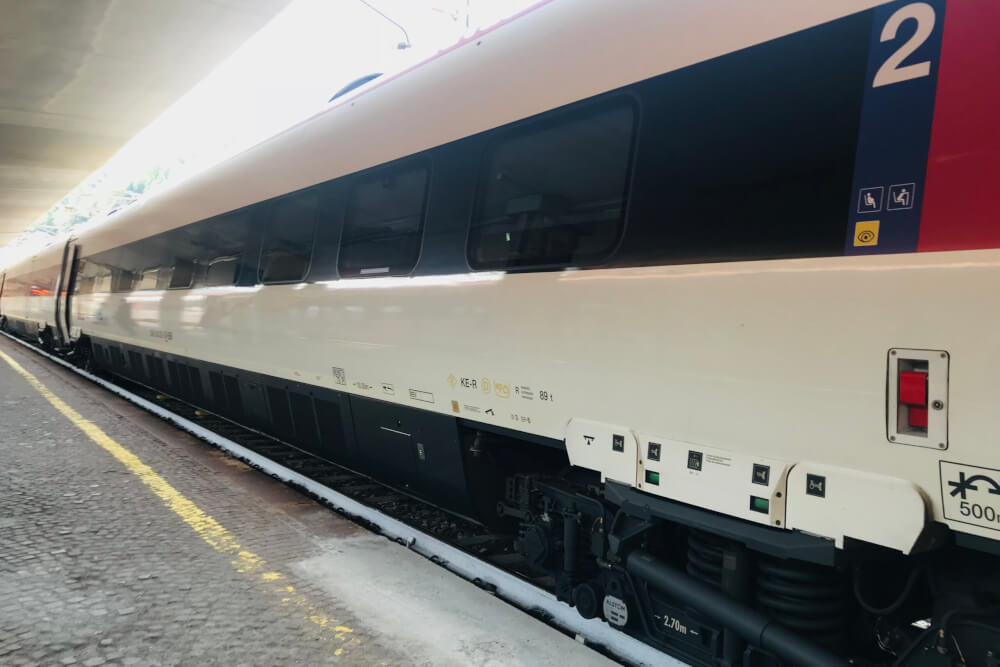
If you don’t have a reserved seat then usually I find the farther you walk, the emptier the carriages will be.
Once you find or choose your carriage, then it’s time to hop on board.
If the door isn’t opening then look for a button like this and press it. This goes for the train doors as well as carriage doors.

Now it’s time for…
Step Seven: Find Your Seat
First off, if your seat is assigned, try to make sure you go in through the correct door.
As you’re walking, look through the glass to see which end your seat will be so that you don’t have to squeeze past people coming from the other door.
If you have large bags, keep an eye out for large luggage racks when you enter. These will usually be found on the ends of the trains. With a carry on there is usually space above your seat for it.

Of course, this doesn’t apply to all trains.
Sometimes regional or suburban trains meant tor short distances will NOT have special areas or compartments for luggage.
In these cases, for shorter journeys, I sometimes find it more comfortable to simply stand in between train carriages so I don’t have to worry about trying to find space for my luggage.

Or, in some countries like Switzerland where they have back to back seats, you can also easily roll your suitcase in between to avoid lifting.

Before sitting down, make sure your seat isn’t reserved and make sure you’re not taking up a priority space if the train is looking full.

Now onto the fun stuff…
Step Eight: Get Comfortable and Enjoy the Journey!
On longer distance trains, there’s often (well hidden) outlets, a fold out table, hooks to put your coat up, etc. There may also be on-board WiFi!

Longer distance trains may have additional amenities like a meal car or even seat service in first class so be sure to take advantage.

Of course keep an eye out for the WC symbol to find the nearest on board toilet (but make sure to bring any valuables with you just in case).

Lastly, while it’s important to get comfy, remember to keep your ticket handy in case controllers come on board.
This happens in pretty much every country although they vary in how frequently they do it.
Getting your tickets checked by a controller tends to happen more often in high speed or long distance trains than the regional ones, but regardless just make sure you have your ticket and also some ID (preferably your passport) on you.
Having ID is important because they’ll sometimes want to verify your name if it’s a reserved ticket, and your age/residency as well depending on whether or not you’ve purchased a discounted fare.

Now after your journey is complete, it’s onto…
Step Nine: Disembark
If you are not getting off at the end destination, then start prepping for disembarkation about 10 min before your arrival time. This gives you plenty of time to gather your belongings and bags in a rational, non-crazed manner.
To keep track of what time you’ll be arriving, keep an eye out for screens that show the scheduled arrival time/estimated arrival time.
Most modern trains will have these, but some older ones may not. In a pinch, you can always open up Google Maps to see where you are, so you can roughly estimate how much longer you have to go.

Upon arrival, if the door isn’t opening then again look for a button with the <> open symbol.
Once the doors are open, be careful getting off the train as there’s often a gap/step.
During this time, it’s important to keep hold of your ticket in case you need to scan it on the way out and be sure that you valuables are secure as train stations can often be a hot zone for pickpockets
To navigate your way off the platform and onwards to wherever you need to go, keep an eye out for signs like these that will point you in the right direction.

If you need a place to drop off your bags while you explore, most major train stations will have a paid left luggage area with lockers, or a drop off service.
This is a great option if you’re too early to check in to your accommodation, or just dropping in for the day.

Lastly, remember that your train ticket is usually only valid for that specific train you boarded, so you unless you bought a special ticket or pass, you won’t be able to use it for onward travel on the metro or bus.
NOTE: If your train is delayed, then depending on the rail company, you may be eligible for compensation! Simply search up “your rail company + late train compensation” to see if there are any options that apply to you.

I Hope This Step by Step Guide on Taking Trains in Europe was Helpful!
Let me know in the comments if you have any more questions.

